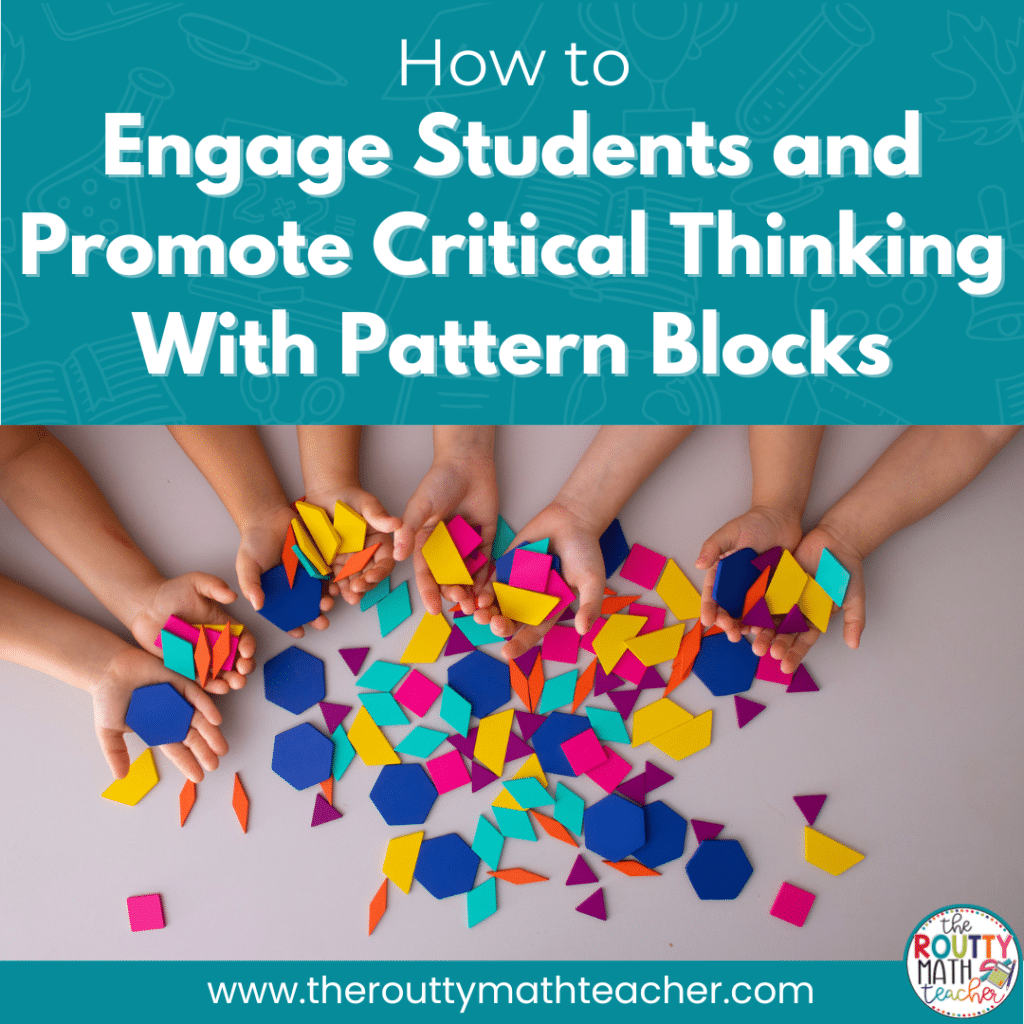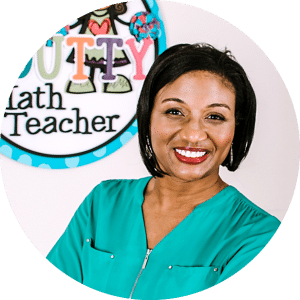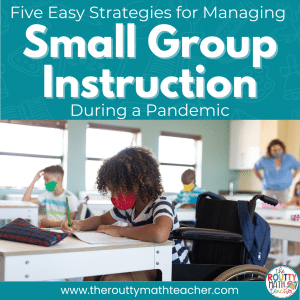When it comes to math manipulatives, one of the most common things I hear is about not knowing what to do with them. In this post, I share one of my favorite activities with pattern blocks. It’s engaging and promotes critical thinking and communicating mathematically.
“Free to a good home!”
This was the sign hovering over a pile full of teacher stuff outside of a classroom door.
Something with bright colors caught my eye, so I rummaged through the pile to see if there was anything there worth my time.
I pushed the pile apart with my hands to see what was at the bottom.
Math manipulatives!! 😁
I couldn’t believe my luck! There were trays of Cuisenaire rods and a box of Base 10 Blocks.
A smile came across my face as I quickly scooped up the manipulatives and ran back to my classroom thinking of all the ways I could use these tools with my students.
Using Manipulatives in the Classroom
One of the most common things I hear from teachers is about not knowing how to best utilize manipulatives. These math tools cost a lot of money but often go unused because teachers are unsure of how to use them.
While I’m an avid collector of all math manipulatives, pattern blocks are one of my favorite math tools because they are versatile and can be used in many different ways in the classroom. And, it’s the one tool most schools seem to have more than enough of.
In fact, when you inherited your classroom, you may have found gobs of these random shapes, maybe even a few buckets of them in the cabinets.
And, you probably thought to yourself, “What am I supposed to do with these? We only teach geometry for three weeks!”
Well friend, did you know pattern blocks can be used for more than your three-week geometry unit? Pattern blocks are amazing tools that can be used all year long!
Pattern blocks include six basic shapes: a yellow hexagon, a red trapezoid, a blue rhombus, a green triangle, an orange square, and a beige rhombus. The pieces are proportional to each other which makes them useful in a variety of ways.
In addition to analyzing the characteristics of two-dimensional shapes, pattern blocks can also be used to teach fractions. There are even some additional fraction pieces you can add to the set to enhance student learning.
Critical Thinking Activities with Pattern Blocks
What’s the Common Attribute?” is an engaging activity that promotes critical thinking with pattern blocks. It can be used year round and makes a great starter activity, especially around the time of your geometry unit. The only prerequisite skills needed are some basic vocabulary terms related to shapes, such as sides, angles, congruent, equal, etc.
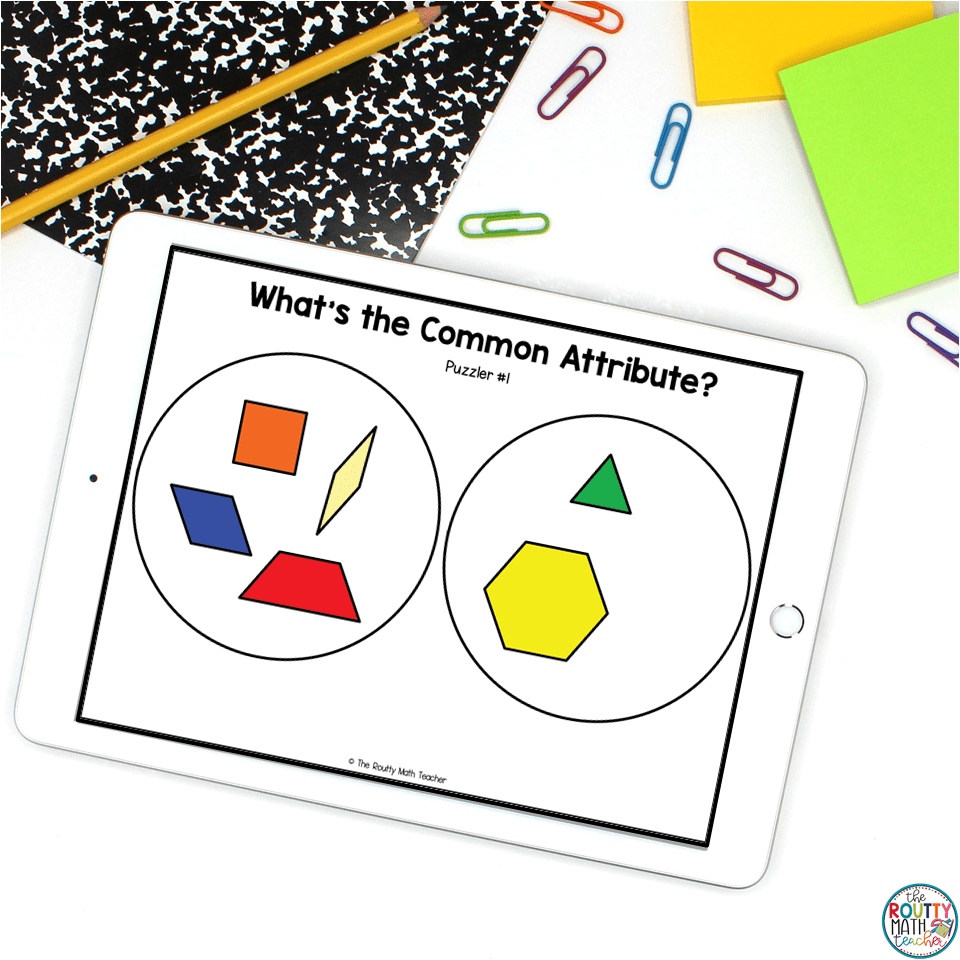
The basic idea is to create a Venn Diagram where pattern blocks are placed according to a specific attribute or set of attributes. Students then use the placement of the pattern blocks to determine the common attribute. (See the example above.)
Here’s how the activity works:
1. Choose a rule for the Venn diagram.
2. Display a Venn Diagram with the blocks in the correct place on a dry erase board or under the document camera.
3. Ask the students, “What’s the common attribute?”
4. Provide students with time to think.
5. Ask students to “turn and talk” to a shoulder partner, face partner, neighbor, or classmate to discuss the answer.
6. Have students share their responses with the class highlighting important vocabulary.
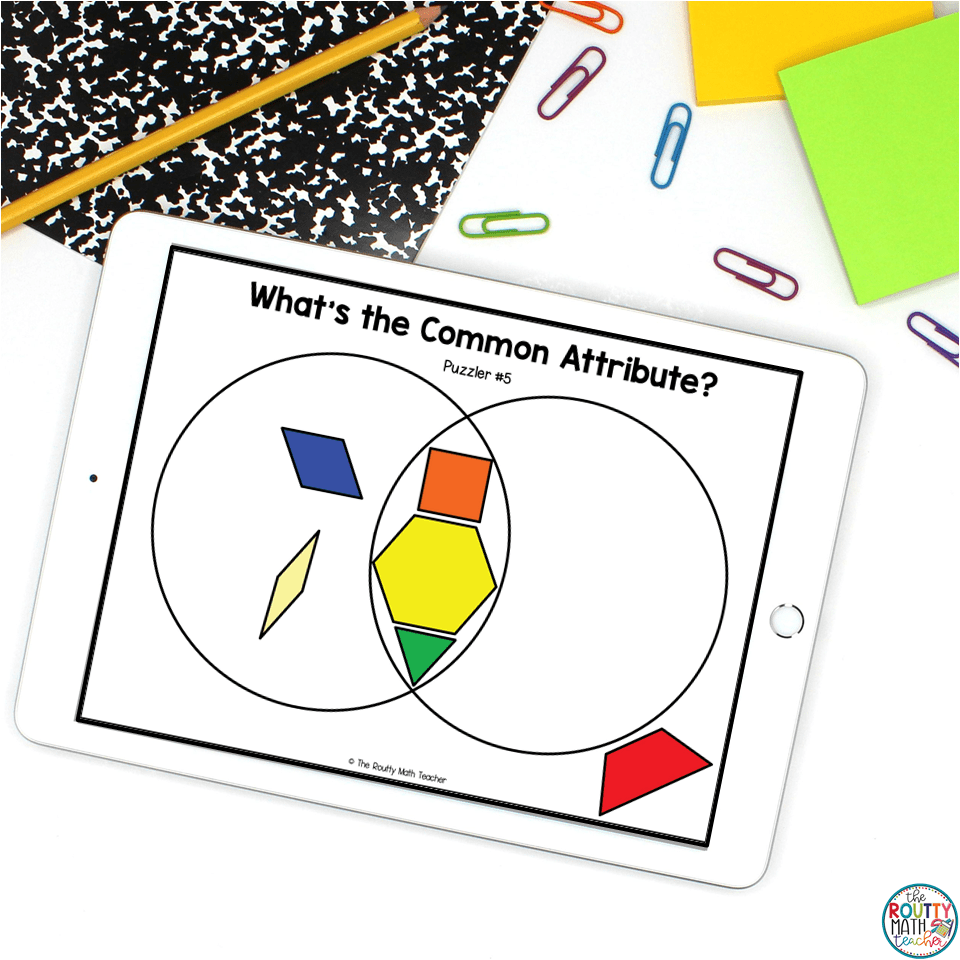
Promote Critical Thinking with Good Questions
Important questions to ask during the debrief:
a. What vocabulary is important here?
b. What’s the common attribute of the left side?
c. What’s the common attribute of the right side?
d. What’s the common attribute of the shapes in the middle, or the intersection, of the two circles?
e. Why is there a shape on the outside of both circles? What does this mean? (It is a part of the set but does not meet the inclusion criteria for either circle.)
What to Do Next
Once students get the hang of the activity, have them create their own puzzlers– a great math menu activity. Then, share their creations with the class and have students decide “what’s the common attribute?”
Ready to try it out? Grab a free set of puzzlers using the form below.
Sound Off!
What’s your favorite way to use pattern blocks in the classroom?

